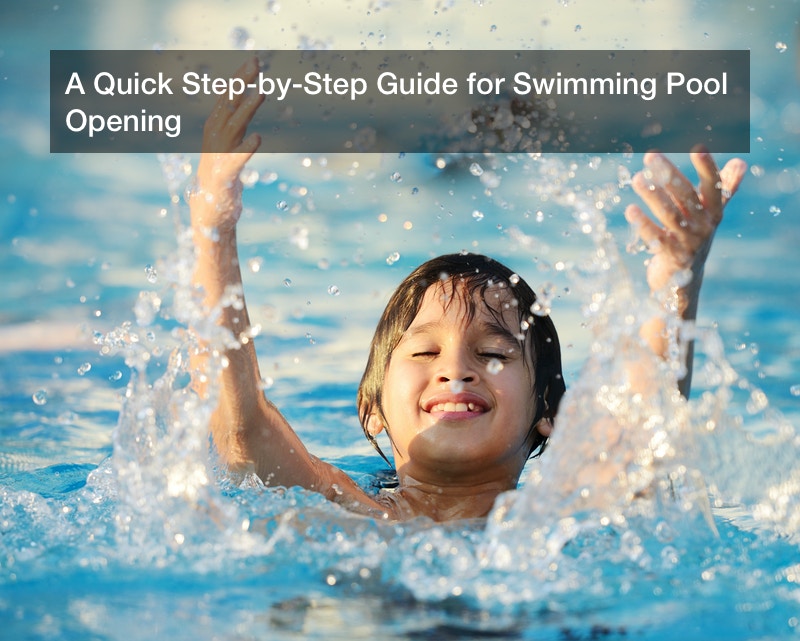
When you love spending time outside, having a pool can be great. Having a pool in your own backyard will give you lots of opportunities for exercise and entertaining. It’s the perfect place to throw a party for people of any age. To get a pool in your own yard, you need to find the pool companies in your area and become familiar with what they offer.
The best swimming pool companies near me will often offer both in-ground and above-ground pools. The above-ground pool places near me will have several styles to choose from. These pools come in many different sizes, depths, and materials. Some are special pool types like an above-ground wave pool. Take a look at plenty of models before you choose the one that’s best for your needs.
If you can catch some above-ground pool specials, you can pay less for your pool. Some companies will have these sales at the very beginning of the pool season or when it’s the off-season. It’s great to be able to pay less and get the pool that you have been dreaming of. With a pool outdoors, there is always something fun to do outdoors.
With signs of winter ending and as it starts to warm up, you’re all eagerly waiting to jump in your backyard pools and cast away the winter blues in a fun-filled summer. However, you can’t just dive in and swim right away as some important preparations need to be done for the pool to be ready for the new swimming season. Here is the step-by-step guide for a stress-free swimming pool opening.
1. Open Your Pool Early
The reason why it’s recommended to open the pool early is to prevent the growth and proliferation of algae, which thrive in dark and warm places. Opening your pool early makes it easy to clean and treat the water, so it will be ideal for swimming in.
2. Hire a Swimming Pool Professional or Do-it-Yourself
Swimming pool opening can be pretty much challenging especially if you don’t have simple DIY skills and that’s why you’re are advised to contract a swimming pool company that offers pool opening and closing services. But if you can do-it-yourself, it’s important to have everything in place – have a checklist if necessary, and have all the essentials at your disposal before you begin.
3. Drain and Clean The Winter Cover
Before removing the pool cover, you will first want to drain water and clean it for proper storage. This process involves the use of a small submersible cover pump that effectively drains the water off your cover. After most of the water has been removed, it’s time to clean the cover by blowing leaves and scooping the remaining debris. This will help to reduce the amount of dirt in your water and make it easy also to for your next winter swimming pool closing.
4. Remove and Store the Swimming Pool Cover
After removing the remaining debris and leaves on the cover, you need an extra pair of hands to properly remove the cover from your pool. Grab on each end and try as much as possible to reduce the amount of debris falling into the pool, though it’s inevitable to have some. Clean the cover with talcum powder to prevent the growth of mold, then allow it to dry before folding and storing it in a cool and dry place.
It’s likely that the pool water will have turned a bit cloudy or green. Worry not because the following tips will help restore water quality to good conditions and prepare for the summer swimming pool opening
5. Assemble the Pump and Filter System
This is especially important if you had connected the winterizing plugs and now you need to re-attach drain plugs, pump, filter and heater. To ensure the pool equipment functions properly check the filter for any impurities and then power up the filter system. You are advised to prime the pump prior to the first start-up to ensure all the moving parts are well lubricated.
Turn on your pool equipment – circulation and filtration system, and open an air relief valve to release the compressed air, which is likely to build up. Purge all of it from the equipment before opening the system – chemical feeder, pump or filter. Allow the circulation system
6. Add Pools Chemicals and Adjust Pool Chemistry
Metal stains and discoloration in pool water is caused by the build-up of heavy metal compounds such as iron, copper and silver over a long time. Using a metal sequestering agent you can prevent water contamination and improve watercolor. Add the agent and allow the pool system to circulate and filter for at least 2 hours, then test your pool chemistry.
Here you’ll need to test for pH and alkalinity, chlorine stabilizer, calcium hardness using a recommended test kit. Adjust each chemical level to ideal ranges – for instance, pH should be between 7.4 to 7.6, chlorine levels 2.0 to 4.0 ppm and 80 to 120 ppm for total alkalinity. Once you attain proper chemical levels, allow the circulation and filtration to run for 10 to 12 hours to ensure clear and comfortable pool water.
The last step in the swimming pool opening is to connect the hardware, including handrails, diving boards, steps and ladders. While installing, check for any damage for safety purposes and finally clean any remaining debris on the pool deck.


